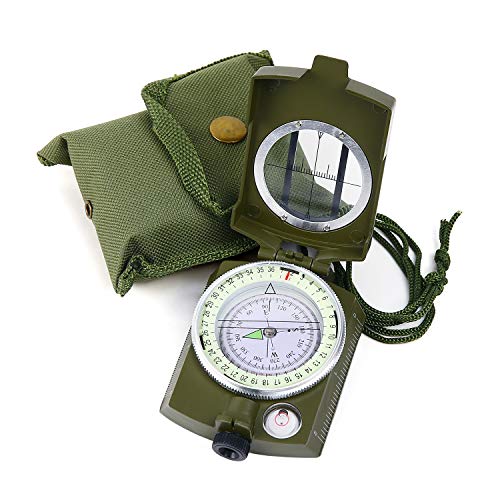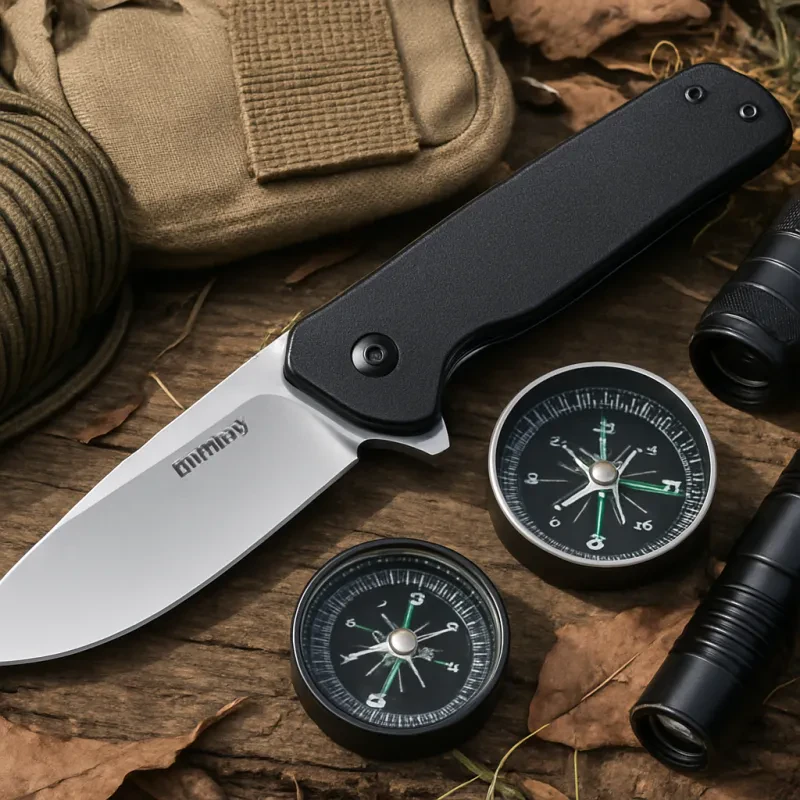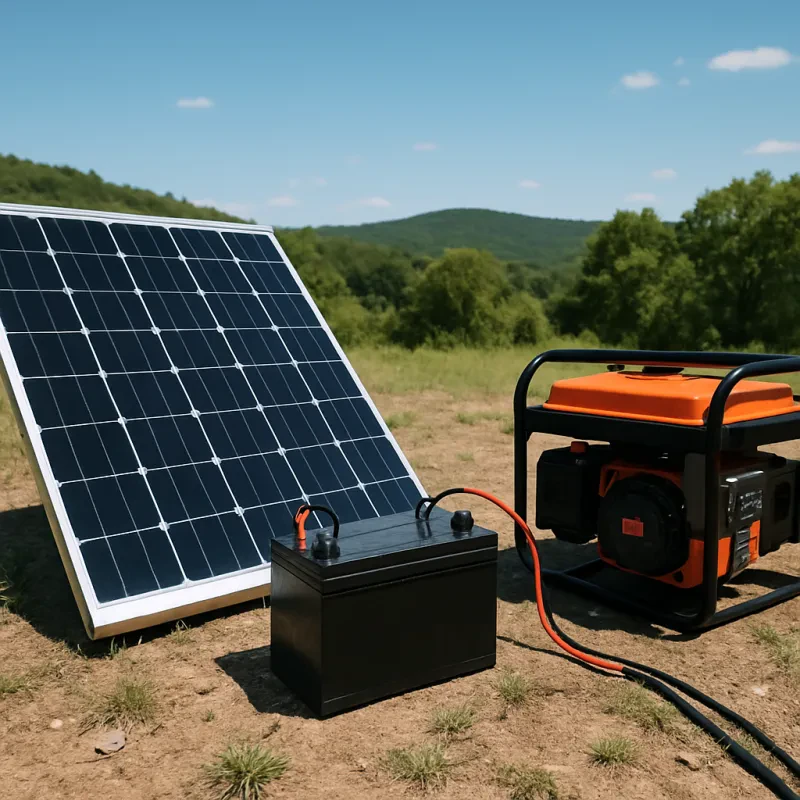The Rich History of Compass and Navigation
Navigation is a skill as old as human history, and the compass has been at the heart of it for centuries. From the earliest lodestone compasses used by Chinese mariners to the precise, lightweight models favored by today's hikers and explorers, the compass has been an indispensable tool for finding our way in the world.
How a Compass is Made
Let's dive into the making of a compass first. The process is quite fascinating!
The Needle
At the heart of every compass is a magnetized needle. This needle is typically made of a lightweight metal alloy that's been carefully magnetized so that one end will always point north.
The needle is arguably the most vital part of a compass. It's where the magic of navigation happens. Let's delve deeper into its intricacies:
Material and Construction
The compass needle is usually made of a ferromagnetic material, such as steel. This type of material is easily magnetized, making it ideal for compass use. The needle is typically thin and elongated to allow it to rotate freely.
Magnetization
Once constructed, the needle is magnetized. One way this is done is by stroking the needle with a magnet multiple times in one direction, aligning the domains within the material. This process ensures that one end of the needle consistently points north when subjected to Earth's magnetic field.
Balancing Act
For accurate readings, a compass needle must be perfectly balanced on its pivot point. This allows it to rotate freely. However, because the magnetic field isn't uniform across the Earth's surface, compass needles are sometimes balanced differently depending on where they're intended to be used. For example, compasses made for the Northern Hemisphere may not work as accurately in the Southern Hemisphere, and vice versa.
Color Coding
Typically, compass needles are painted in two different colors. The north-pointing end is often painted red, while the south-pointing end might be painted white or another color. This color distinction makes it easier to read and use the compass, especially in low-light conditions.
Jeweled Bearings
High-quality compasses often have needles that pivot on jeweled bearings. These bearings reduce friction, allowing the needle to move more smoothly and settle more quickly, giving the navigator a faster and more accurate reading.
Damping
To prevent excessive swinging or oscillation, which could delay getting an accurate reading, some compasses feature a damping mechanism. This often comes in the form of a viscous liquid in which the needle is submerged. The fluid slows down the needle's movement, helping it settle quickly to point north.
In essence, the compass needle is not just a piece of magnetized metal. It's a carefully crafted instrument, fine-tuned for accuracy and efficiency. It stands as a testament to human ingenuity, showing how we've harnessed the principles of magnetism for navigation. And while it might appear simple at first glance, there's a lot more to that little needle than meets the eye!
The Housing
The needle floats in a housing, which is filled with a liquid. This liquid, usually an oil or alcohol, helps the needle to move smoothly and freely, without any jerkiness. The housing is made to be durable and transparent, so you can easily read the needle's direction.
The Base Plate
The base plate, typically made of clear, durable plastic, offers a sturdy platform for the compass housing. It often includes scales and rulers that can be used with maps, making navigation easier.
The Rotating Bezel
Around the housing, you'll find a rotating bezel, often marked in degrees from 0 to 360. This bezel is used to set bearings and make calculations during navigation.
Military-grade Lensatic Compass for Camping and Hiking
Never Get Lost Again: Navigate Confidently with Our High-Quality Military-Grade Lensatic Compass for Camping and Hiking!
Product information
€12.93
Product Review Score
4.6 out of 5 stars
8662 reviewsProduct links
How a Compass Works for Navigation: Pointing the Way Forward
Now, here's the magic part. How does this little gadget help people navigate vast landscapes?
The Earth's Magnetic Field
At its core, a compass relies on Earth's natural magnetic field. The magnetized needle aligns itself with the Earth's magnetic field, always pointing towards the magnetic north.
True North vs. Magnetic North
It's essential to know that the "north" a compass points to is not the geographic North Pole (True North) but the Magnetic North. The difference between these two is called magnetic declination. Depending on where you are in the world, you might need to adjust for this declination to navigate accurately.
Taking a Bearing
If you're navigating with a map and compass, one of the primary tasks you'll do is take a bearing. This involves aligning the edge of your compass with your current location and where you want to go on the map, then rotating the bezel to match the compass's orienting lines with the map's north-south grid lines. Once set, you can follow the compass direction in the real world to reach your destination.
Triangulation
If you're unsure of your location on a map, you can use a technique called triangulation. By taking bearings to two or more known points in the landscape, you can then transfer these bearings to your map and find where they intersect. This point of intersection is your current location!
Understanding the Enduring Importance of a Compass
Despite advancements in technology, the compass remains a staple in the world of navigation. Its enduring relevance can be attributed to several key factors:
- Reliability: A compass operates without batteries or electronic components, making it immune to technical failures. It works reliably in all weather conditions, from the sweltering heat of a desert to the chilling winds of a mountain peak.
- Accuracy: A compass, when used correctly, can offer precise directional guidance. Especially when paired with a detailed map, a compass can help orienteerers navigate complex landscapes and hikers maintain their course on winding trails.
- Survival: In situations where survival becomes a priority, a compass can be a lifesaver. It can guide lost individuals towards populated areas or assist in maintaining a steady course when visibility is poor.
Mastering the Art of Compass Navigation
Simply owning a compass is not enough. It's a tool that requires skill and understanding to use effectively. Learning to interpret the compass in conjunction with a map is a valuable skill for any adventurer. Courses in orienteering can provide hands-on experience, while online resources offer in-depth guides for self-learners. Remember, practice makes perfect.
Conclusion: The Compass - An Adventurer's Best Friend
The compass, despite its simplicity, is a powerful tool in navigation. Its unmatched reliability and accuracy make it indispensable for outdoor enthusiasts. Whether you're a seasoned explorer or a weekend hiker, the compass deserves a place in your backpack. So before you set foot on your next adventure, make sure you're equipped with this essential tool - and the knowledge to use it effectively.
Make sure to visit our compasses category



